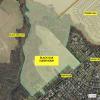In this armchair tour, we return to western Sussex County and the historic city of Seaford.
First stop is the Ross Mansion and Plantation, 23669 Ross Station Road, a 1,389-acre property that includes an 1856 Italianate-style mansion, a Gothic Revival honeymoon cottage, a historic slave quarter and a number of other outbuildings. The mansion was built in the 1850s by William Henry Harrison Ross for himself and his family. Ross served as the Democratic governor of Delaware from 1851 to 1855. Extremely popular, he was instrumental in bringing the railroad into Southern Delaware and became a local hero, but he was also a slave owner and Southern sympathizer. When war broke out between the states, Delaware sided with the North. Ross supported the Confederacy, and he was forced to escape to England. One story holds that he was hidden in an apple barrel by his slaves and transported to the port via train in that barrel. Today, the mansion stands as a reminder of pre-Civil War life, furnished in period style. Hours are 1 to 4 p.m., Saturdays and Sundays. For information, call 302-628-9500 or go to www.seafordhistoricalsociety.com.
The Gateway to Freedom (Harriet Tubman Marker) is in a small triangular Gateway Park traffic island on Market Street. Unveiled in 2014, this historic marker chronicles the Harriet Tubman-Tilly Escape, considered by Tubman scholars to be one of her most complicated and clever escape attempts. Working at the request of a fiancé who had escaped to Canada, Tubman located a slave named Tilly in Baltimore. Believing a steamship voyage to Philadelphia would be too dangerous and expensive, Tubman decided she and Tilly would travel by steamboat to Seaford, first sailing south down the Chesapeake Bay then up the Nanticoke River. Upon landing, most likely at the present-day Riverwalk, Tubman and Tilly spent the night at the old Coulbourn Hotel which is now the site of Gateway Park. The Tilly escape site was included in the National Underground Railroad Network to Freedom by the National Park Service in 2013. An exhibit that tells the Tilly story in depth can be found at the Seaford Museum in historic downtown Seaford.
In historic downtown Seaford, a number of commercial buildings are on the National Register of Historic Places. These buildings demonstrate examples of late 19th century and early 20th century architecture. St. Luke's Protestant Episcopal Church was built in 1843 and reconstructed in 1904. The two-story, brick Gothic Revival-style building has a one-story chancel and crenellated three-story tower, and features stained-glass lancet windows. Concrete buttresses were installed in 1943. Delaware Gov. William H. H. Ross (1814-87) is buried in the churchyard.
Seaford Museum occupies the city's old post office. Opened in 2003 and completely run by volunteers, the museum has hundreds of artifacts cleverly exhibited that depict life in and around Seaford from the days of the Nanticoke Indians up through Seaford's heyday as the Nylon Capital of the World. Don't miss the museum's fascinating Maritime Gallery which depicts the night sky on April 1, 1900 over the Seaford wharf.
The Seaford Train Station, built in 1856, is a reminder of the importance of the railroad to the Western Sussex area. After it was built, new trade routes opened northward, and these new routes helped change the character of the area's agricultural production. Any town that secured a rail station was guaranteed designation as an important trade center. Seaford benefited from the resulting prosperity. The original station was destroyed by fire in the early 1900s. The second station, still in use today, was built in 1902 adjacent to the site of the old station.
Views of the Nanticoke River provide some of the most impressive natural features along the scenic Nanticoke Heritage Byway.
On Harrington Street, visitors will see Invista, which is housed in the former DuPont facility that contributed to Seaford's prosperity in the mid-20th century as the home of the world's first nylon plant.
Make a point to dine at Bon Appetit, 312 High St. With European ambiance and French cuisine, Bon Appetit has been locally owned for 20 years by chef Chino Pedemonte and wife Karen. For more information, go to bonappetitseaford.net.
Also check out The Oak and the Owl Gift Shop, 413 High St., and Weathered Treasures - Antiques & Country Items, 401 High St.
For more information, go to www.visitsoutherndelaware.com/our-towns.
As always, safe travels and watch your speed as you make your way through our small towns. Speed limits are enforced.















































